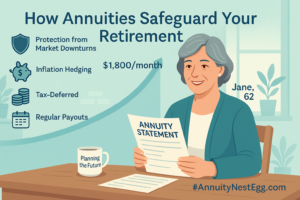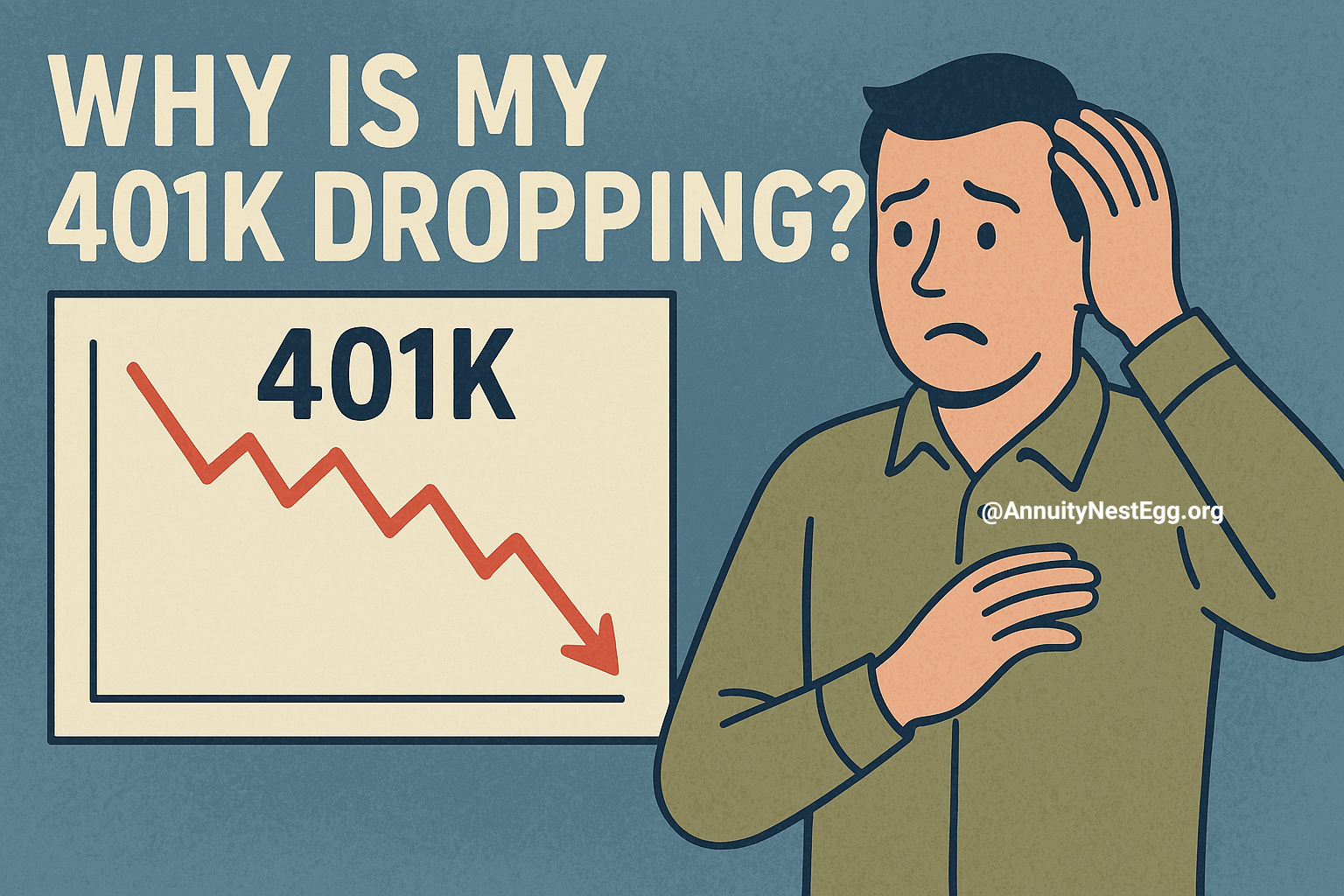The Anxiety of a Shrinking 401(k)
If you’ve recently checked your 401(k) statement and felt a pit in your stomach, you’re not alone. Over the past several months, market volatility has surged, leaving many Americans questioning why their retirement savings are plummeting—and what they can do about it. From inflation concerns to geopolitical shocks and aggressive Federal Reserve rate hikes, 2023’s economic turbulence has rattled even seasoned investors. In this blog, we’ll dissect the forces driving your 401(k)’s decline and explore how annuities, a time-tested financial tool, can help stabilize your retirement strategy amid today’s uncertainty.
Why Markets Are Tanking
The S&P 500’s wild swings in 2023—from a 20% rally early in the year to a sharp Q3 correction—highlight the fragility of today’s markets. Several factors are converging to erode 401(k) balances:
- Inflation & Interest Rates: The Federal Reserve has raised rates 11 times since March 2022, pushing borrowing costs to a 22-year high. While this aims to cool inflation, it also stifles corporate profits and drags down stock valuations.
- Geopolitical Tensions: Escalating conflicts in Ukraine and the Middle East have disrupted global supply chains, spiked oil prices, and fueled recession fears.
- Tech Sector Volatility: Once-reliable growth stocks like Tesla and Apple have stumbled, eroding confidence in equity-heavy portfolios.
For retirees and near-retirees, this volatility is especially dangerous. A downturn now could trigger the “sequence of returns risk”, where early losses permanently reduce your nest egg’s longevity.
Why Market Dependency Is Risky
Most 401(k) plans are tethered to stocks, bonds, or mutual funds, leaving savings vulnerable to macroeconomic swings. In 2023, the average 401(k) balance dropped 4% year-to-date, according to Fidelity, with older workers hit hardest. The problem? Traditional 401(k)s lack guaranteed income mechanisms. When markets crash, retirees face impossible choices: withdraw less (jeopardizing their lifestyle) or risk depleting savings too soon.
This uncertainty has sparked a growing demand for strategies that decouple retirement income from market performance—a role annuities are uniquely designed to fill.
Safety Nets in a Chaotic Market
An annuity is a contract with an insurance company that converts a lump-sum payment into predictable, lifelong income. Unlike a 401(k), which rises and falls with markets, annuities offer stability through three primary types:
- Fixed Annuities: Provide guaranteed returns, similar to a CD, shielding your principal from market risk.
- Indexed Annuities: Earn interest tied to a market index (e.g., S&P 500) but with a “floor” that protects against losses.
- Immediate vs. Deferred: Begin payouts immediately or delay them to grow tax-deferred.
For example, a fixed indexed annuity could credit 4-6% annually based on market gains while guaranteeing 0% in down years—a lifeline when stocks tumble.

How Annuities Safeguard Your Retirement
How Annuities Safeguard Your Retirement
Amid today’s instability, annuities address critical retirement risks:
- Guaranteed Income: A 500,000 annuity could 2,500+/month for life, covering essentials like housing and healthcare, regardless of market conditions.
- Market Crash Protection: Fixed and indexed annuities ensure your principal isn’t eroded by volatility.
- Inflation Hedging: Add a cost-of-living adjustment (COLA) rider to increase payouts over time.
- Tax Efficiency: Earnings grow tax-deferred until withdrawal, maximizing compounding.
Consider Jane, 62, who shifted 30% of her 401(k) into an annuity after the 2022 bear market. Now, she receives $1,800 monthly, reducing her reliance on her volatile stock portfolio.
Is an Annuity Right for You?
Key Considerations
Annuities aren’t one-size-fits-all, but they’re worth exploring if:
- You’re within 10 years of retirement and want to lock in gains.
- You’re losing sleep over market swings.
- You lack pension income and need predictable cash flow.
Annuities often have surrender charges (3-10 years) and fees for riders. Work with a fiduciary advisor to compare providers and avoid overspending on unnecessary features.
Take Control Amid the Chaos
While no one can stop market volatility, you can insulate your retirement plan from its worst effects. By allocating a portion of your 401(k) or IRA to an annuity, you create a “paycheck for life” that endures bear markets, inflation, and global crises. In an era of uncertainty, that’s not just smart planning—it’s peace of mind.
Next Steps:
Consult a financial professional to analyze your risk exposure and explore annuity options tailored to your goals. The sooner you act, the more you’ll safeguard the retirement you’ve earned.

